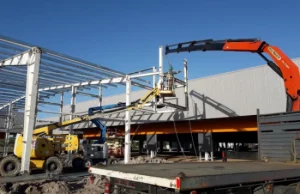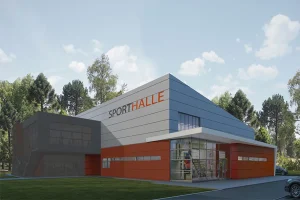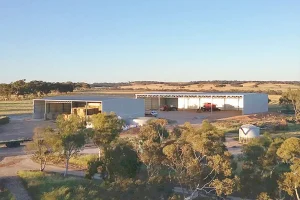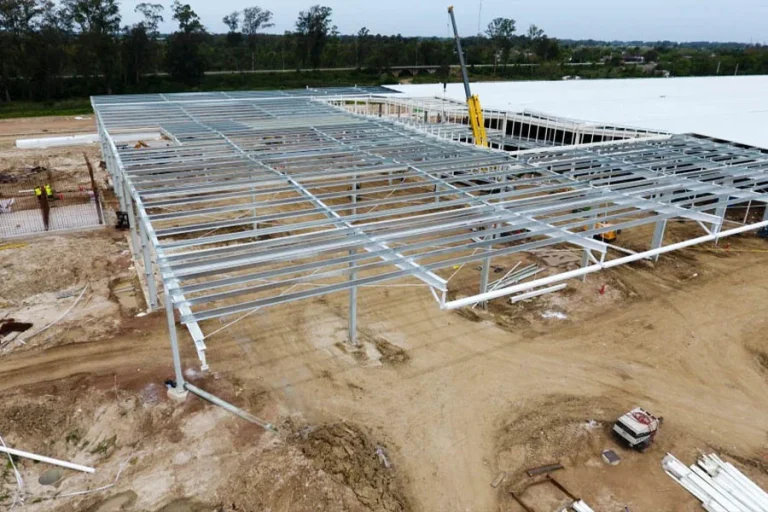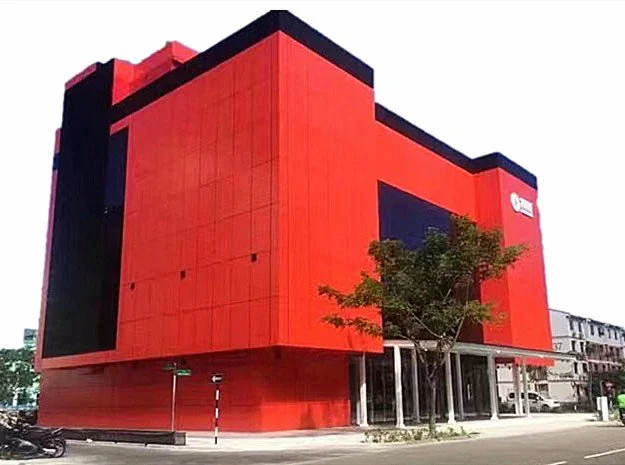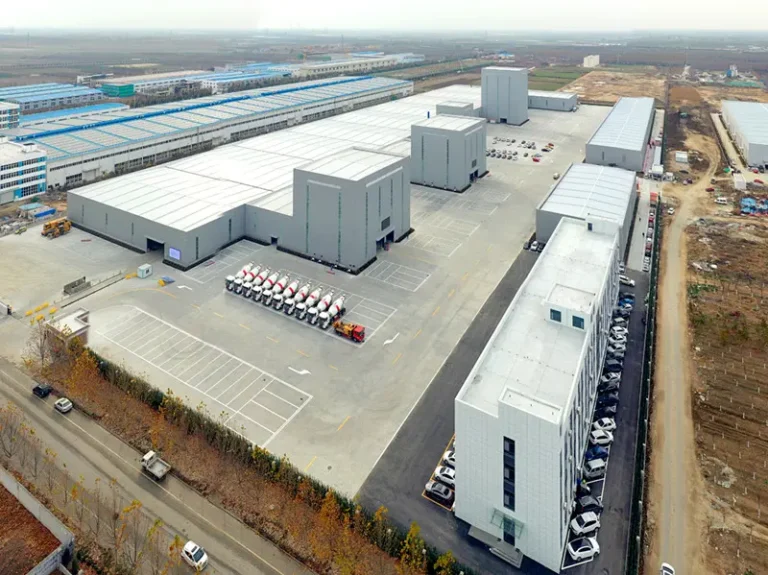The Importance of Material Selection in Steel Truss Buildings
Exploring the Basics of Steel Truss Structures
Material selection is crucial for steel truss structures due to the direct impact it exerts on the strength of structures, cost and adaptability to modern needs in construction.
H-shaped Steel
A critical material in steel truss building, H-beams possess strong strength-to-weight ratios that make them appropriate for application in vertical columns and horizontal girders. They cause minimal wastage of material and maximize strength.
Truss Girder
A triangular system made of steel (e.g., beams, rods) that distributes loads evenly. It reduces deformation and structural instability, especially in uses like long-spanning structures like bridges or industrial roofing.
Applications
Industrial Buildings: Aircraft hangars, warehouses and factories use steel trusses for large column-free space.
Infrastructure: Truss gantry cranes (as mentioned within the context) utilize steel trusses to transfer heavy loads within factories and ports.
Roof Systems: Lightweight steel trusses support roofs in residential and commercial buildings, occasionally in conjunction with stone A-frame designs for hybrid systems.
Steel truss structures fulfill the needs of contemporary construction by providing a sturdy framework for various types of buildings to remain tall and stable.
XINGUANGZHENG was founded in 1997. Has since been a leader in crafting top-notch steel structures. With over 25 years of experience and a proud record of more than 1,700 successful project completions across 100 nations, XINGUANGZHENG has convincingly established itself as a steel truss master builder. From warehouses, cold storages to congested airports and industrial parks, its works prove the flexibility and dependability of steel trusses.
Advantages of Using Steel in Truss Construction
Utilizing steel in construction brings about numerous benefits due to its renowned strength and longevity properties that make it a perfect option for bearing substantial spans without requiring additional supports in between them. This outstanding feature is demonstrated in projects executed by XINGUANGZHENG like the Commercial Airport in Uruguay that covers an area of 11,574 square meters with a portal frame structure. Furthermore, steel’s ability to withstand elements, like wind and seismic forces guarantees the durability and safety of the buildings. The aircraft hangar built by XINGUANGZHENG in Niger showcases its durability in environmental conditions.
XINGUANGZHENG’s Innovative Material Choices
XINGUANGZHENG’s core is dedicated to pushing the boundaries of material selection to elevate the capabilities of its steel constructions. They actively engage with universities and research centers to drive forward advancements in technology. Their NPA Industry Workshop initiative showcases this dedication by leveraging cutting-edge materials in the creation of high-performance alloy parts for electric boilers. This emphasis on pioneering material selections not only enhances the strength of structures but also meets the exact needs of each project.
Metal Roof Trusses: A Crucial Component
Benefits of Metal Roof Trusses in Construction
Metal roof trusses are essential for the success of steel buildings.
Speed of Construction
Metal trusses, particularly those using H-shaped steel, enable faster assembly compared to traditional materials. Steel structures can be erected 2–3 times faster than concrete systems, reducing project timelines and labor costs.
Durability & Weather Resistance
Metal trusses are less affected by climatic conditions, supporting all-weather construction. They resist corrosion and deformation, ensuring long-term structural integrity even in harsh environments.
Cost Efficiency
Lightweight yet strong, metal trusses reduce material waste and require fewer supports. This lowers financial costs and improves capital turnover rates, as noted in the context of steel structure projects.
Space Optimization
Metal truss systems (e.g., steel or aluminum) occupy minimal space during installation, freeing up site areas for other operations.
Sustainability
Recyclable materials like steel align with eco-friendly construction practices, minimizing environmental impact.
XINGUANGZHENG’s Metal Roof Truss Offerings
XINGUANGZHENG provides metal roof trusses to cater to different construction requirements successfully. Just like the Steel Structure Sports Hall. The main steel structure frame used H columns and beams with white painting. Roof and wall material used Steel sheet and glass wool insulation. This exemplifies XINGUANGZHENG’s capability to customize solutions that enhance both functionality and visual attractiveness.
Steel Trusses for Pole Barns: Enhancing Structural Integrity
Key Features of Pole Barns with Steel Trusses
Steel trusses help increase the strengthening and load-carrying strength of pole barn structures common in agricultural and industrial settings. Custom steel trusses can be developed to accommodate specific spans (e.g., long-span buildings) and loads so that they are suitable for precast sections or crane systems. With the application of steel trusses, space is now openable without support columns inside the building.
Steel beams also protect external elements like strong winds and seismic events to guarantee the safety and long-term stability of barn structures. In areas of severe weather conditions, these frameworks offer dependable security for stored items and machinery. The Piggery in Australia engineered to endure wind velocities of 120 km/h demonstrates the strength and toughness provided by steel beam building methods.
Choosing the Right Materials for Success in Construction Projects
Factors Influencing Material Choice in Steel Truss Buildings
Selecting the materials is crucial for every construction project. This holds for steel truss buildings as well. Various factors come into play when deciding what materials to use.
Economic Considerations come first. Fluctuations in iron ore, coke and alloy prices directly impact budgets. Employing locally sourced steel can minimize supply chain risk.
Environmental factors also come into play when it comes to the choice of material for construction purposes; buildings in areas prone to high winds or earthquakes need materials that will withstand such natural calamities effectively. While corrosion resistance is critical for sites near water bodies or in humid climates. For example, coastal projects may require galvanized steel.
Frequently Asked Questions
Q: What is a steel truss in construction?
A: A truss is essentially a triangulated system of straight interconnected structural elements. The most common use of trusses is in buildings, where support to roofs, the floors and internal loading such as services and suspended ceilings, are readily provided.
Q: Are steel trusses cheaper than wood?
A: Metal roof trusses are usually much more expensive than timber trusses. Although they tend to serve a little longer, they occasionally require maintenance. Experienced professionals will be able to build it quickly and efficiently, but their installation requires a lot of skills, practices and resources.
Q: How does XINGUANGZHENG support global clients in obtaining customized steel solutions beyond standard products?
A: XINGUANGZHENG offers custom services, including special processing (e.g., heat treatment, machining, surface finishing) and size management (products ranging in size from 0.013mm wires to 1,150mm forged bars). Further support comes in the way of flexible payment terms, reliable logistics, timely shipment and documentation services for efficient worldwide delivery.

